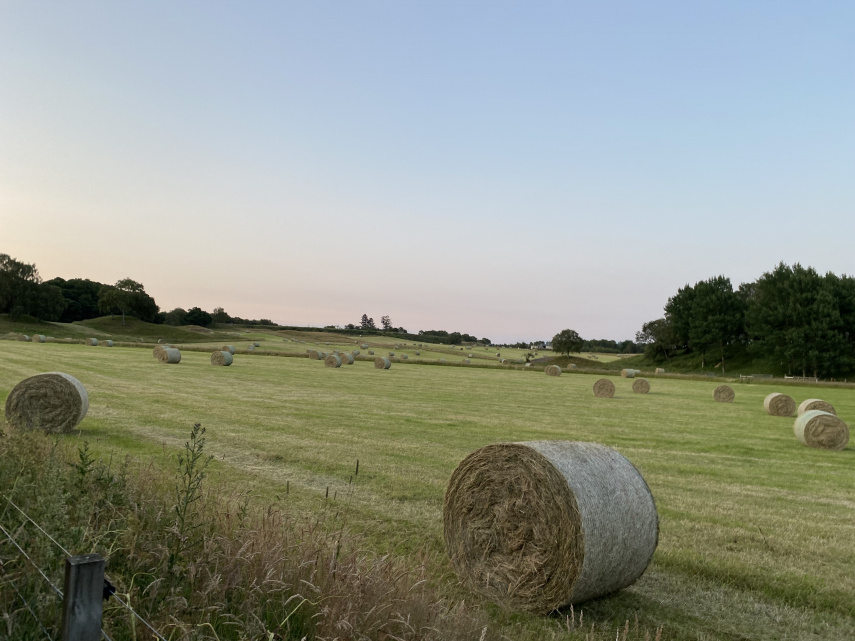
Opportunities for Land Reform – Making your voice heard
James MacKessack-Leitch
With the public consultation on the Scottish Government's proposals for its new Land Reform Bill extended to 30 October, Policy and Practice Lead James MacKessack-Leitch reflects on the work of the Scottish Land Commission to inform the proposals – and some of the less obvious opportunities for land reform up for consideration – in our latest blog.
The Scottish Land Commission was created to deliver a determined focus on land reform, provide leadership for changing culture and practice, and advise Government on how to drive forward Scotland’s land reform journey.
Part of that journey has been to examine the existing structure of Scotland’s land ownership, management, and use, which has led to us building an extensive evidence base – and delivering a range of recommendations to tackle the issues our research uncovered.
The Scottish Government’s Land Reform Bill consultation picks up three of these recommendations: a public interest test on the transfer of significant land holdings; an empowered Land Rights and Responsibilities Statement (LRRS) backed by workable Codes of Practice; and compulsory land management plans.
All three measures, in different ways, tackle head-on the issues of potentially problematic power and control identified through our research. While the initial spur for these proposals arose from our 2019 research into the issues associated with scale and concentration of land ownership, the themes of power and control, and their impacts, have continued to arise in other areas of our work, most recently in our research into the rural land market and the effects of natural capital investment.
I would strongly encourage everyone to take some time to examine the detail of our recommendations when developing your response to the consultation, and it is also worth considering where other opportunities lie, and the outcomes that these mechanisms could deliver.
As it stands, in our current system control over land is derived from ownership. The landowner makes the decision whether, what, and when to build, develop, plant, farm, or rewild – or often, just as crucially, not to do anything. In a local area, if a landowner also owns a large volume of private rented housing, businesses (the pub, shop, and/or hotel), as well as community amenities and infrastructure, it’s easy to see how much power and control can rest with one individual.
This is not to say that this power must or will be exercised inconsiderately – many of Scotland’s significant landowners are active, engaged, and invested in their communities – but it does pose a risk to the public interest where there is the potential for significant negative outcomes.
This is perhaps particularly true at the time of transfer of a landholding. While the outgoing landowner may well have been committed to working with the local community and even popular, there’s no guarantee that the incoming landowner will be as dedicated, nor is there any guarantee that the new landowner will carry on in the direction set by the outgoing landowner. Increasingly, we are seeing a change in landowner profiles – far more corporate buyers and institutions, many from overseas – often with radically different visions, and ambitions for significant land use change.
For our purposes, it doesn’t really matter whether these ambitions are for the greater good or not; our focus is on how the community, livelihoods, and opportunities are ‘hostage to fortune.’
Our proposal for a Public Interest Test (PIT) on Transfers – carried through to the Land Reform Bill consultation – will help ensure that risks are assessed, and that community, local business, agricultural, and charitable interests will be taken into account where significant land transfers are proposed.
The Public Interest Test is, of course, a test. It can be passed with flying colours – and we hope that in most cases it will! Where there is a potential risk to the public interest, it can still be passed with conditions, and that’s where the real opportunities lie.
Most obviously there is an opportunity to support community ownership aspirations, and the government has made that commitment. But land reform, and a diverse pattern of ownership and tenure, isn’t all about community ownership.
Outcomes from applying the PIT could also ensure, for example, that more land is made available for local housing of all types. There could also be opportunities for local enterprise – and particularly farmers – to invest, expand, and safeguard their business if land is made available as a condition of the transfer.
Individuals and families too could benefit. One of the most common asks in our evidence was for the opportunity for small land purchases: to self-build, start a smallholding, or develop woodland. This aspiration aligns strongly with moves to support rural repopulation, could be key to ensuring the vitality of remote and rural communities, and also sets a course towards a pattern of ownership much more like our European neighbours.
These are just some of the possibilities, arising from just one proposal. The Land Reform Bill will outline the mechanisms and provide the tools to make change possible, but it’s the imagination of our communities, citizens, and enterprise that will make the most of the opportunities that arise as a result.
The consultation is an unmissable opportunity to make your voice heard, so please do so. Visit the online portal, Land Reform in a Net Zero Nation, which remains open until 30 October.
